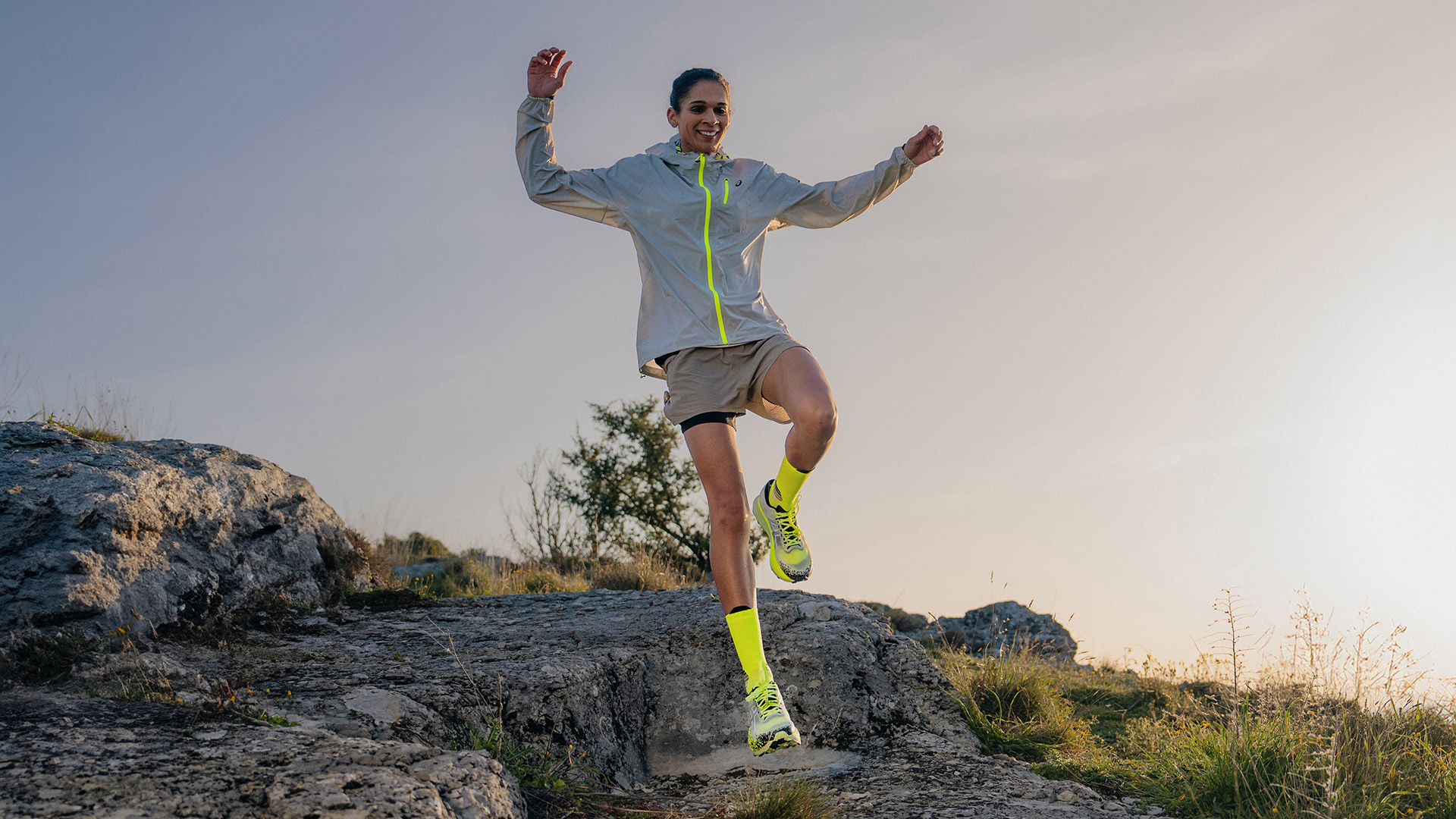

Leon Poultney
Looking to conquer the wilderness with a touch of style and a dash of flair? Look no further than the best trail running shoes! These trusty companions aren't just for show; they'll have you soaring up and down the most rugged hills like a mountain goat with a sense of humour.
Equipped with features to tackle everything from sharp rocks to slippery mud, trail running shoes from top brands like Inov-8, Salomon, and Adidas Terrex are like the Swiss Army knives of footwear. And with Gen Z leading the charge for outdoor adventures, they're as trendy as avocado toast on Instagram!
But don't worry, we haven't forgotten about the pavement pounders out there. Those who prefer their runs on smoother surfaces should check out our best running shoe guide. And if you're serious about your workouts, check out T3's best workout shoe guide for even more shoe-spiration.
Our current favourite trail shoe is the mighty Inov-8 Trailfly G270 V2, which does everything just right: it has the perfect mix of cushioning, agility, support, and comfort. If you prefer running on more challenging terrain, check out Saucony's Peregrine 14. The North Face's Summit Vectiv 2.0 Pro is an optimal choice for those who run on both train and road – and do it fast.
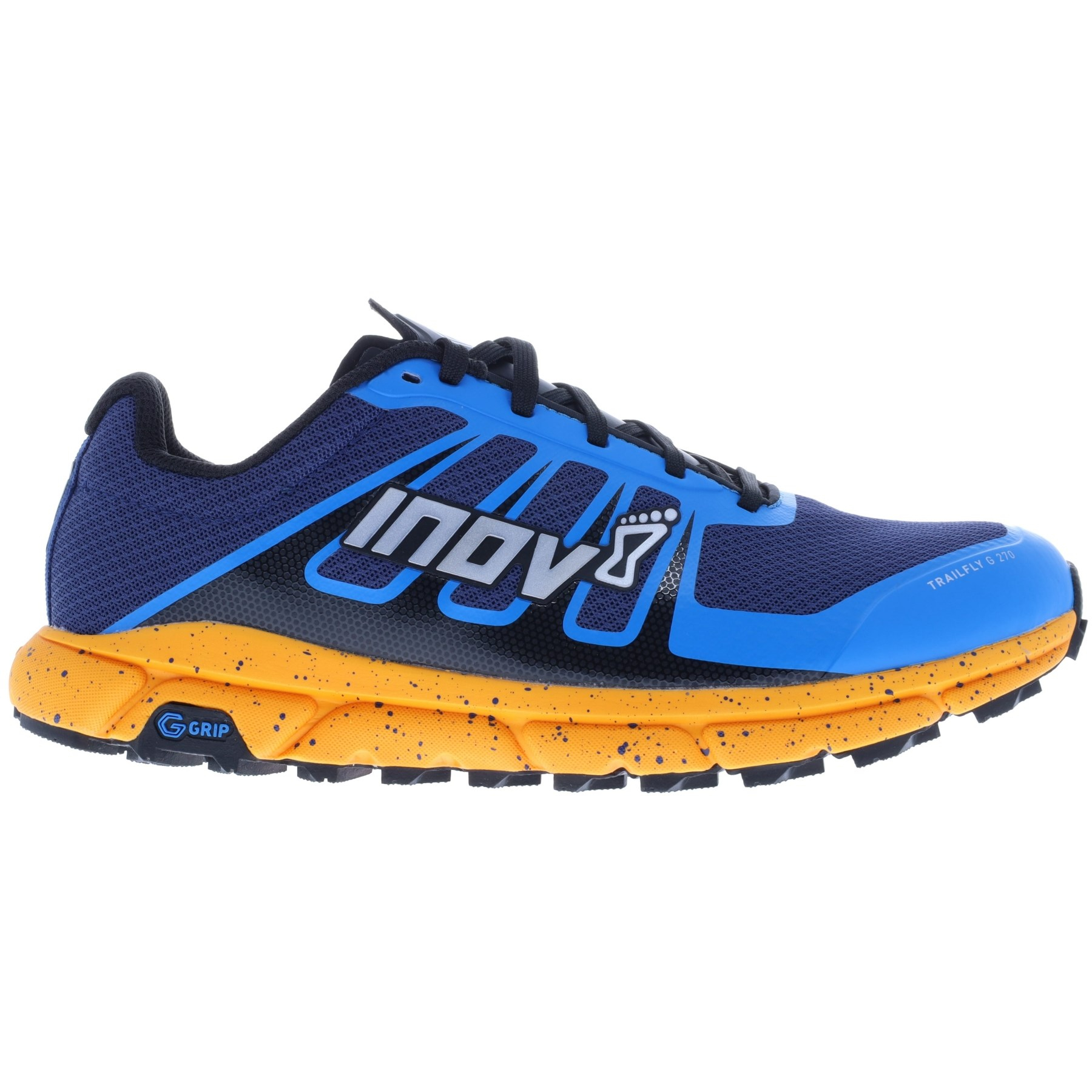
This shoe contains everything we loved about the first-gen, including the excellent grip and durability, the light, speedy, agile ride, the balanced cushioning and stability. But with a better upper to edge up the comfort. This is evolution, not revolution.
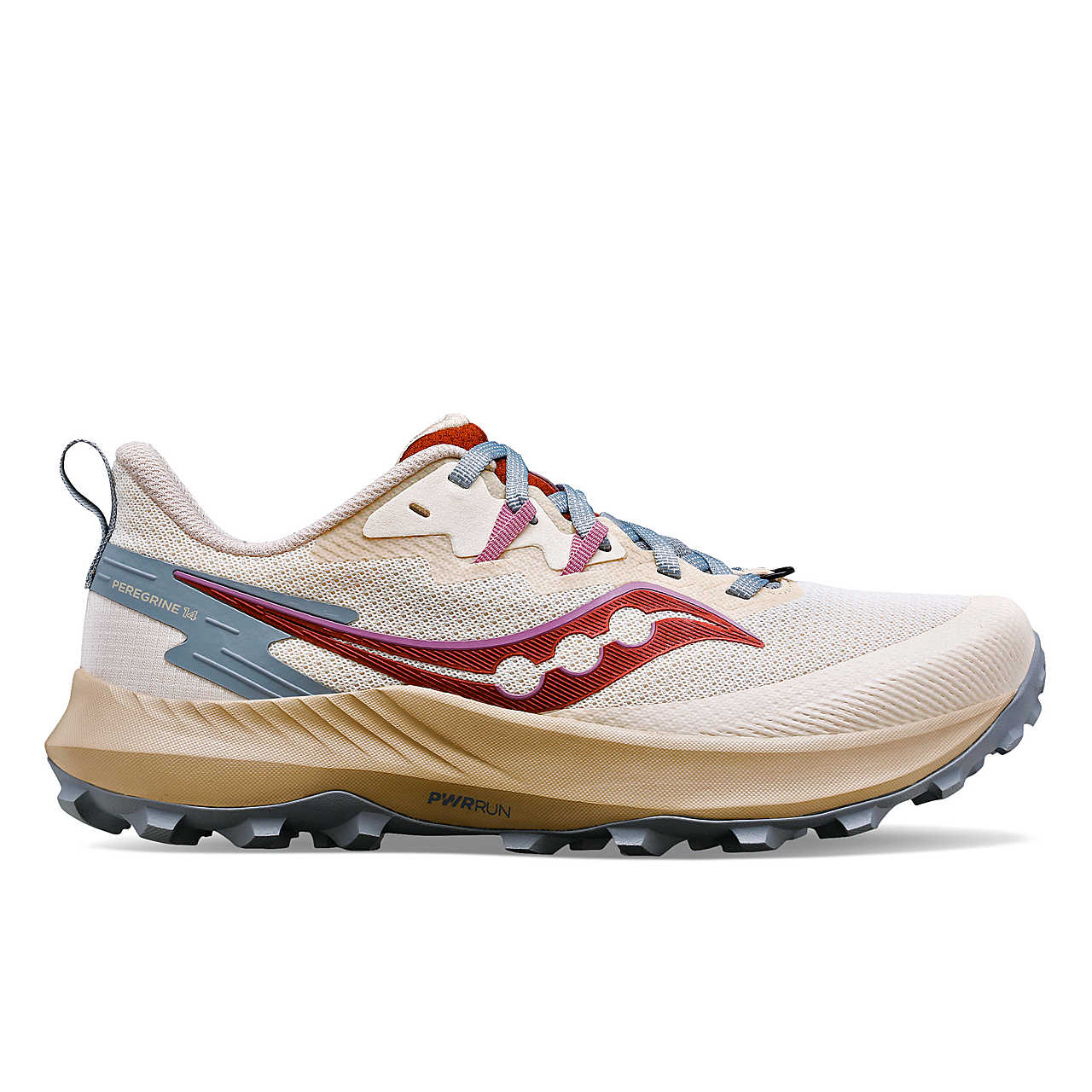
With chunky 5mm lugs and a debris-resistant outer, the Saucony Peregrine 14 is perfect for tackling tricky terrain. What's more, in the latest version, there's a softer blend of PWRRUN cushioning for more protection from impacts. It's a great update on a popular trail runner.

With a well-balanced rocker, soft, responsive foam, plenty of energy coming from the carbon plate, and a roomy toe box, the update from The North Face has created a well-rounded shoe that will easily transfer from road-to-trail with maximum comfort.
Best trail running shoes to buy right now
Best overall
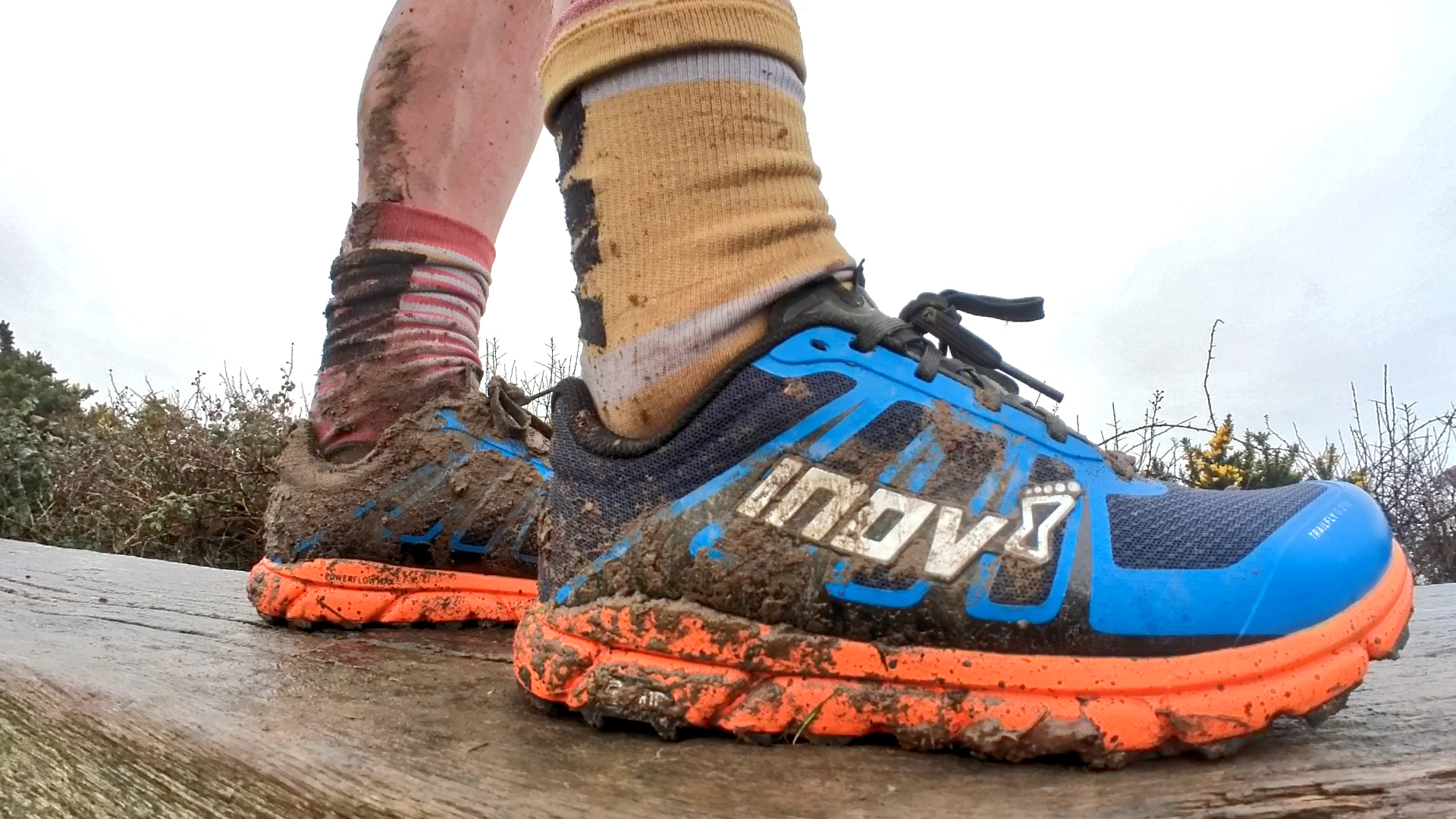
Specifications
Reasons to buy
Reasons to avoid
It’s fair to say that the first generation inov-8 Trailfly G270 was a huge hit. With its combination of durable uppers, fast and snappy zero-drop, graphene-infused midsole and super-sticky grip, it scooped best trail shoe awards all over the place.
But when a shoe finds a winning formula, we’re always wary of the follow-up. Brands love to tinker, and not always in a good way. Has the brand-new Trailfly G270 V2 made smart improvements?
Thankfully, yes, it did. Everything we loved about first-gen remains, including the excellent grip and durability, the light, speedy, agile ride, the balanced cushioning and stability. In fact, it feels like you’re running in the identical shoe but with a better upper to edge up the comfort. This is evolution, not revolution; if you love the first-gen, you will love these.
Read our full Inov-8 Trailfly G270 V2 review
Best for technical terrain
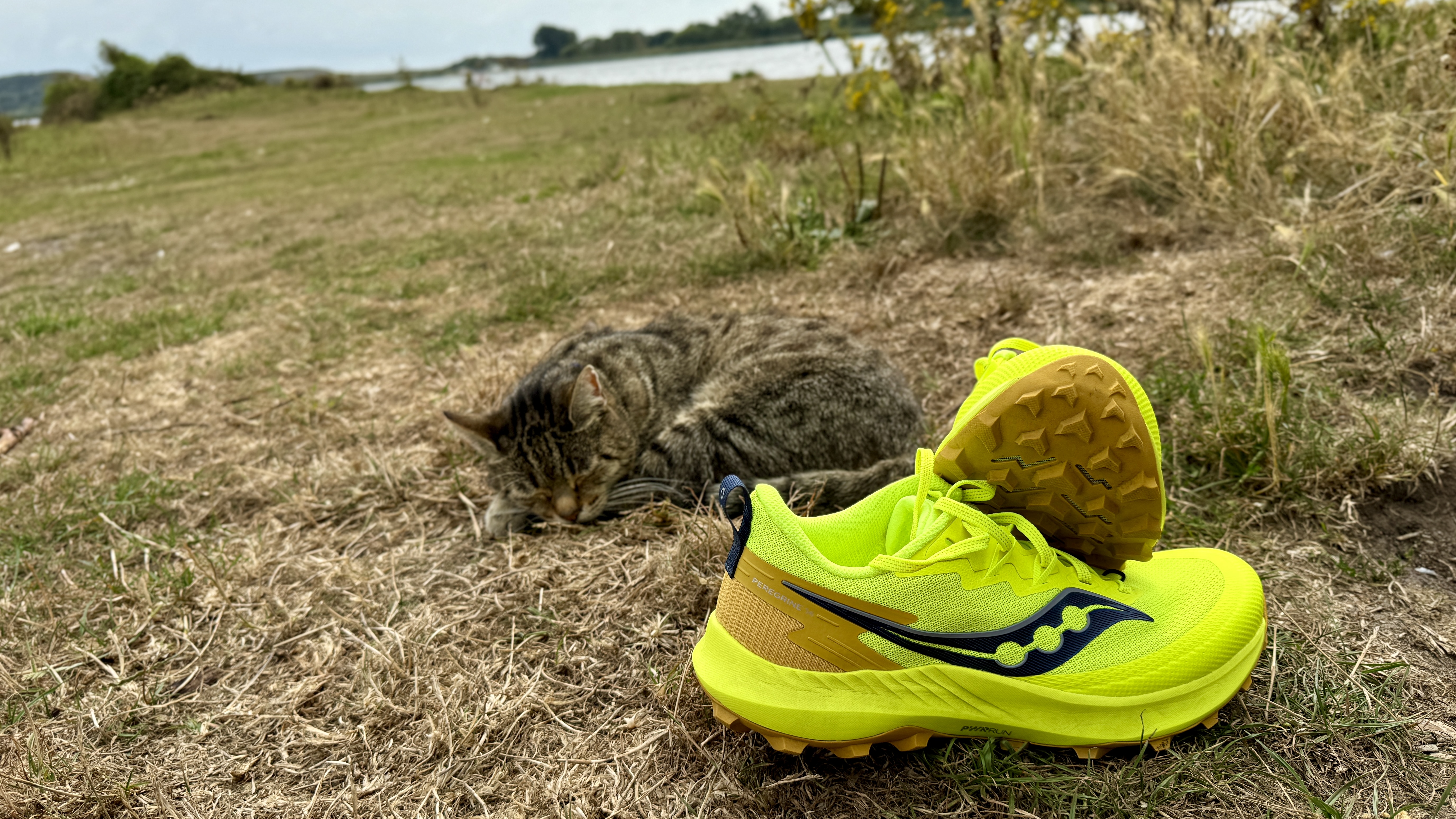

Specifications
Reasons to buy
Reasons to avoid
We have been waxing lyrical about the Saucony Peregrine from pretty much all of its life, and the recent updates have made this already excellent shoe even greater in our humble opinion.
Both the 12 and 13 were durable and versatile trail shoes that performed well in all weather and on all terrain. The update to the lug design and increased cushioning foam arguably makes the latest version even better,
Again, Saucony like to charge a pretty penny for their shoes, and there's nothing different here, but we've found them to be reliable and last a decent amount of time.
A revised outer is now better at protecting from debris and other crud, while the refreshed tongue is now more comfortable against the foot.
The shoe has also lost a bit of weight, although most won't feel it, plus the softer foam makes things a little more comfortable underfoot when going the distance.
Read our full Saucony Peregrine 14 review.
Best road-to-trail
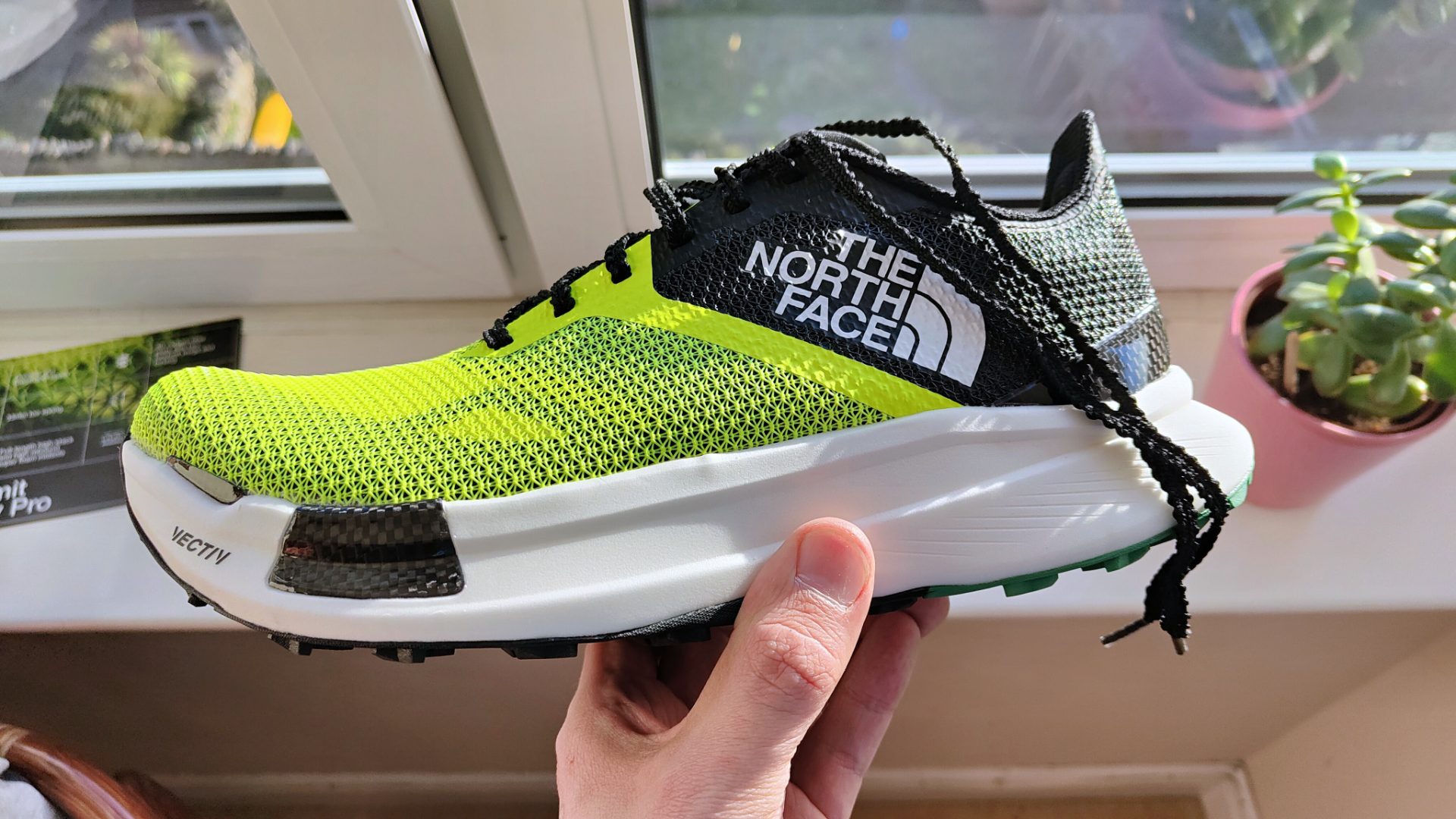
Specifications
Reasons to buy
Reasons to avoid
The Summit Vectiv 2.0 Pro updated some of the features that made the original The North Face Flight Series Vectiv so innovative; it also inherited some of its flaws.
Thankfully, the pros outweigh the cons by a mile, including the well-balanced rocker, soft, responsive foam, plenty of energy coming from the carbon plate, and a roomy toe box, making it much easier to recommend the shoes now.
The Summit Vectiv 2.0 Pro is a super shoe through and through, and the price reflects this, which might not be justifiable to (or needed by) many trail runners. Those who can, though, will be rewarded with what we think is the best road-to-trail running shoe these days, and that's no small feat in this saturated market.
Read our full The North Face Summit Vectiv 2.0 Pro review
Best cushioned
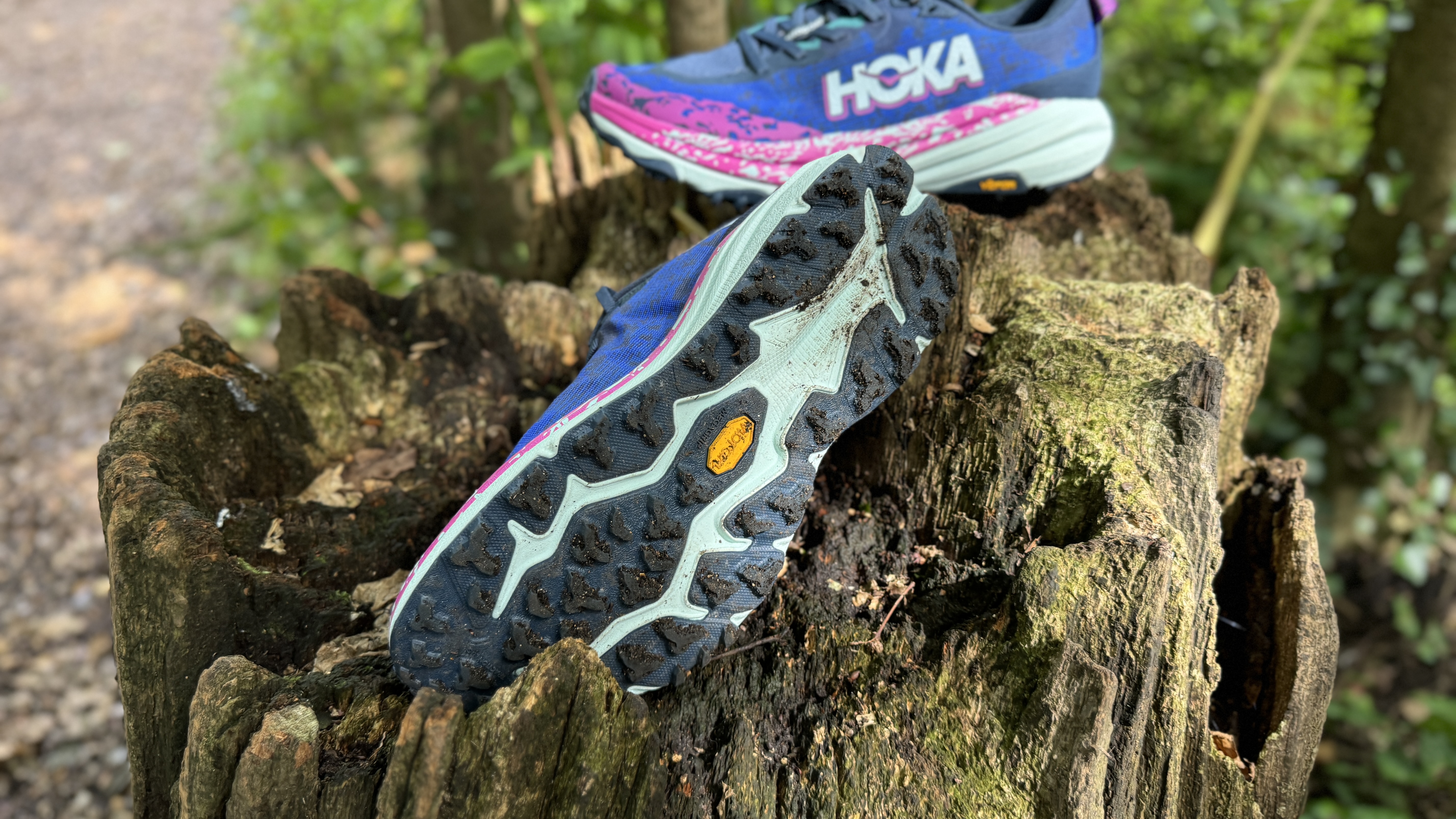
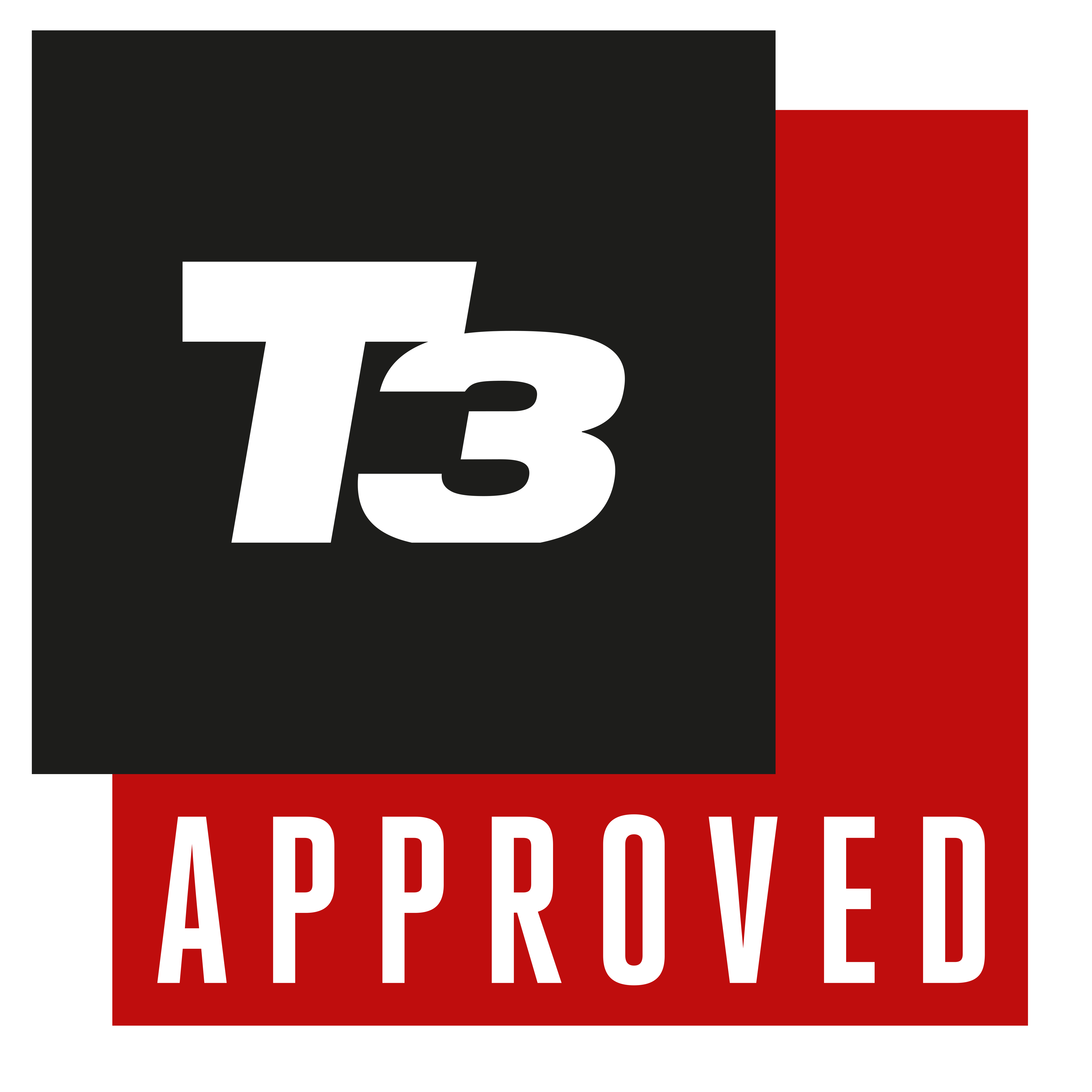
Specifications
Reasons to buy
Reasons to avoid
The Hoka Speedgoat 6 marks a thoughtful evolution in the Speedgoat series, focusing on enhanced durability, comfort, and trail performance. The updated CMEVA midsole foam is a standout, offering improved stability and longevity while maintaining the plush cushioning that trail runners love.
The shoe's upper has also seen significant improvements, with a more breathable woven design and a four-way stretch vamp that provides a better fit and reduces toe compression on rough terrain. The reinforced toe bumper and dual-sided gusseted tongue add to the shoe's protective and comfort features.
Compared to its predecessor, the Speedgoat 6 continues to deliver exceptional stability, even with a slight increase in heel-to-toe drop from 4mm to 5mm, making it ideal for long-distance trail runners who value comfort and support. However, the shoe's narrow fit might not be suitable for all, and its breathability could be a concern in hotter climates.
The Speedgoat 6 successfully builds on the strengths of previous models, offering a well-rounded, durable, and comfortable trail running experience. While it may not be the best option for those seeking maximum speed or running in extreme heat, it remains a top choice for endurance and stability on challenging trails.
Read our full Hoka Speedgoat 6 review.
Also consider: The Hoka Speedgoat 5 offers a lighter build, enhanced midsole rebound, and excellent traction with the Vibram Megagrip sole. The sock-like mesh upper provides comfort and flexibility, though the narrow toe box may be a drawback for some. Ideal for multi-terrain runners who value grip and bounce, the Speedgoat 5 excels on muddy and technical trails.
Best ultralight
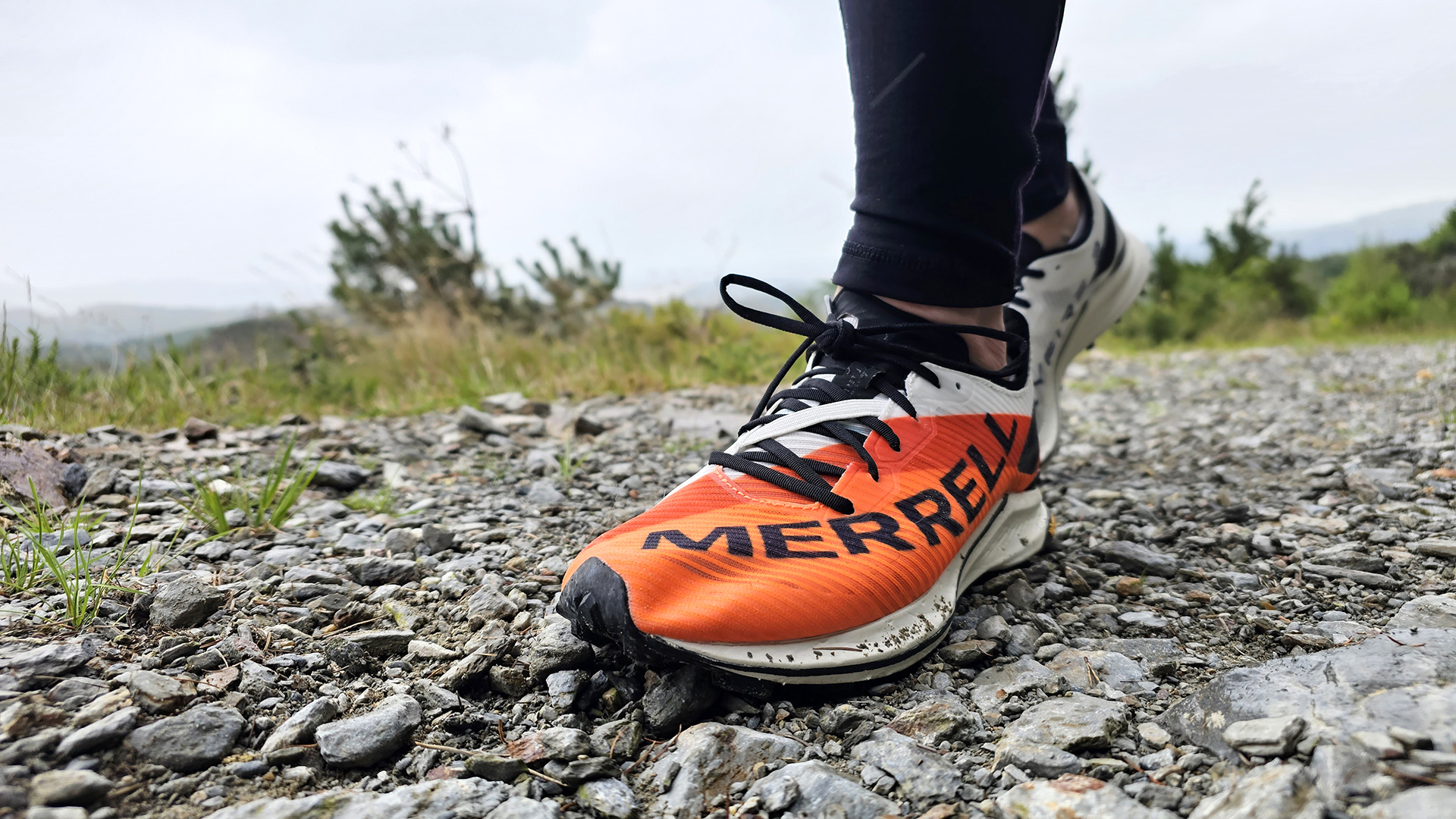
Specifications
Reasons to buy
Reasons to avoid
There's no denying that the Merrell MTL Skyfire 2 is something of a specialist shoe. But as a superlight trail running shoe for race days, it's one of the best options. In that sense, it excels in its design specification – it's unbelievably light on the feet, comfortable yet responsive over distances of up to a half-marathon, and out-grips most of its similarly lightweight rivals. On the other hand, as an all-around trail running shoe, it wouldn't be our first choice unless low weight is your ultimate priority. Our advice? Save it for the days you really want to push the pace or beat the competition.
Read our full Merrell MTL Skyfire 2 review.
Best for arch support

Specifications
Reasons to buy
Reasons to avoid
The Asics GEL-Trabuco 10 is a very exciting prospect if you're looking for a trail shoe designed for overpronation – on our test runs, the grip was great on an 11-mile trail run over all sorts of terrain, including grass, rocks, road, wooden stiles, stoney tracks and dusty dry-mud fields.
However, if you are already into trail running and not having any problems in that direction, they may be a tad on the stiff, heavier side for you. That said, it's hard not to love the on-trend look of the Gel-Trabuco 10 with the turquoise knitted uppers combined with a hot pink sole with design accents and laces to match. Not to mention, it's comfy right away!
Read our full ASICS Gel-Trabuco 10 review
Best for mixed terrain
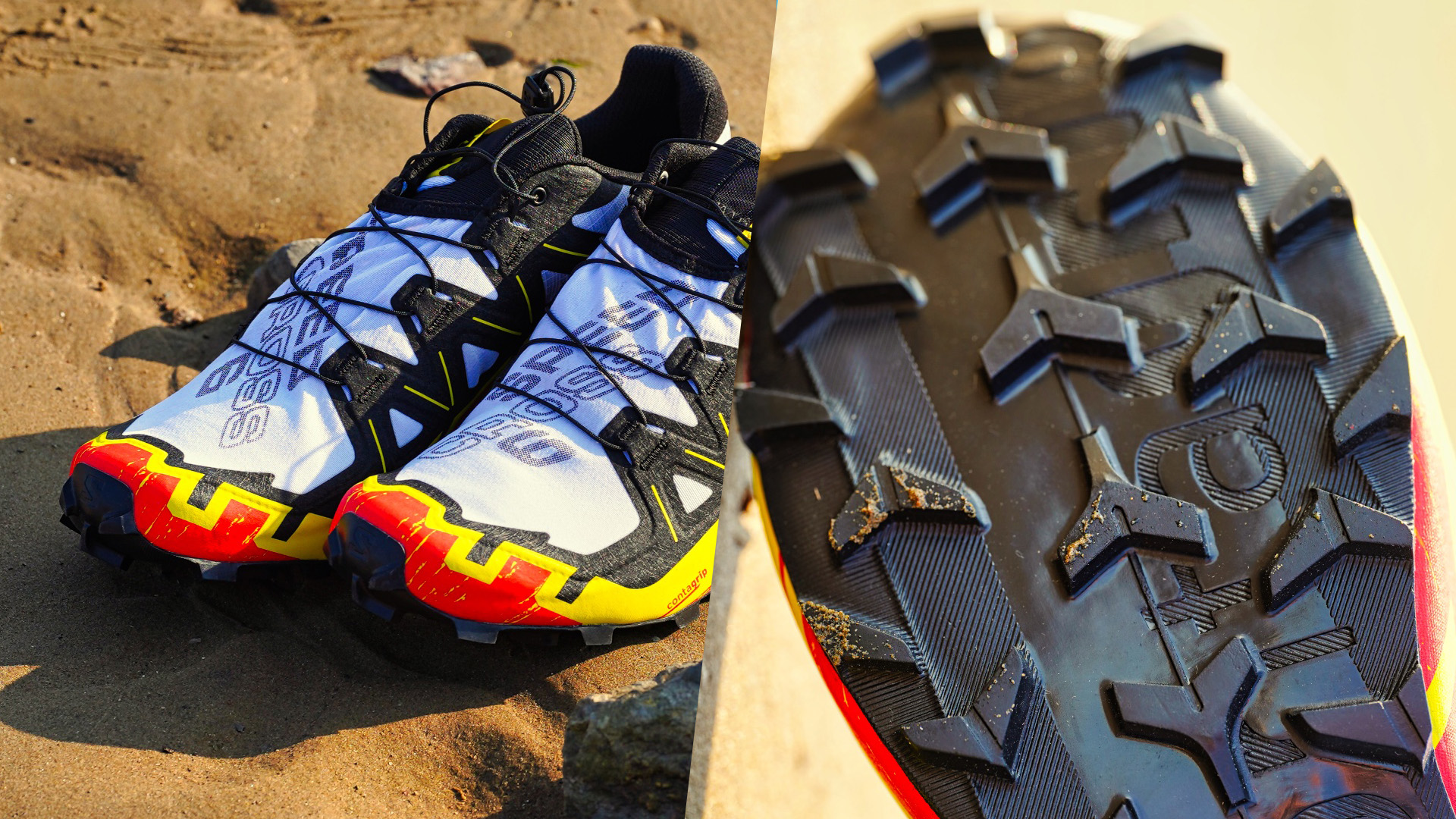
7. Salomon Speedcross 6
Specifications
Reasons to buy
Reasons to avoid
Salomon recently underwent a slight rebranding to emphasise not only the outdoor heritage of the brand but also its strong presence in the athleisure scene. The revamped Speedcross 6 is the perfect representation of this mix of purposes; the shoes are equally as good for trail running as they are for roaming the city streets in your gorpcore outfit.
Here, we'll focus on the trail running prowess of the Speedcross 6, of course. These trail shoes feel most at home on mixed terrain, especially on muddy paths where grip is paramount to avoid injury. The 5 mm lugs bite into soft ground and help propel yourself forward; here is a short IG reel of how it looks in action.
Grippy and capable as it might be, the Salomon Speedcross 6 is by no means intolerably to wear, like some trail shoes in the same category. In fact, it's one of the most comfortable trail running shoes we tried in 2022, thanks to the Quicklace lacing system and the soft upper. Sadly, the Speedcross 6 is not waterproof and hard to clean, so once you get them dirty, they'll stay filthy forever.
Best for plantar fasciitis
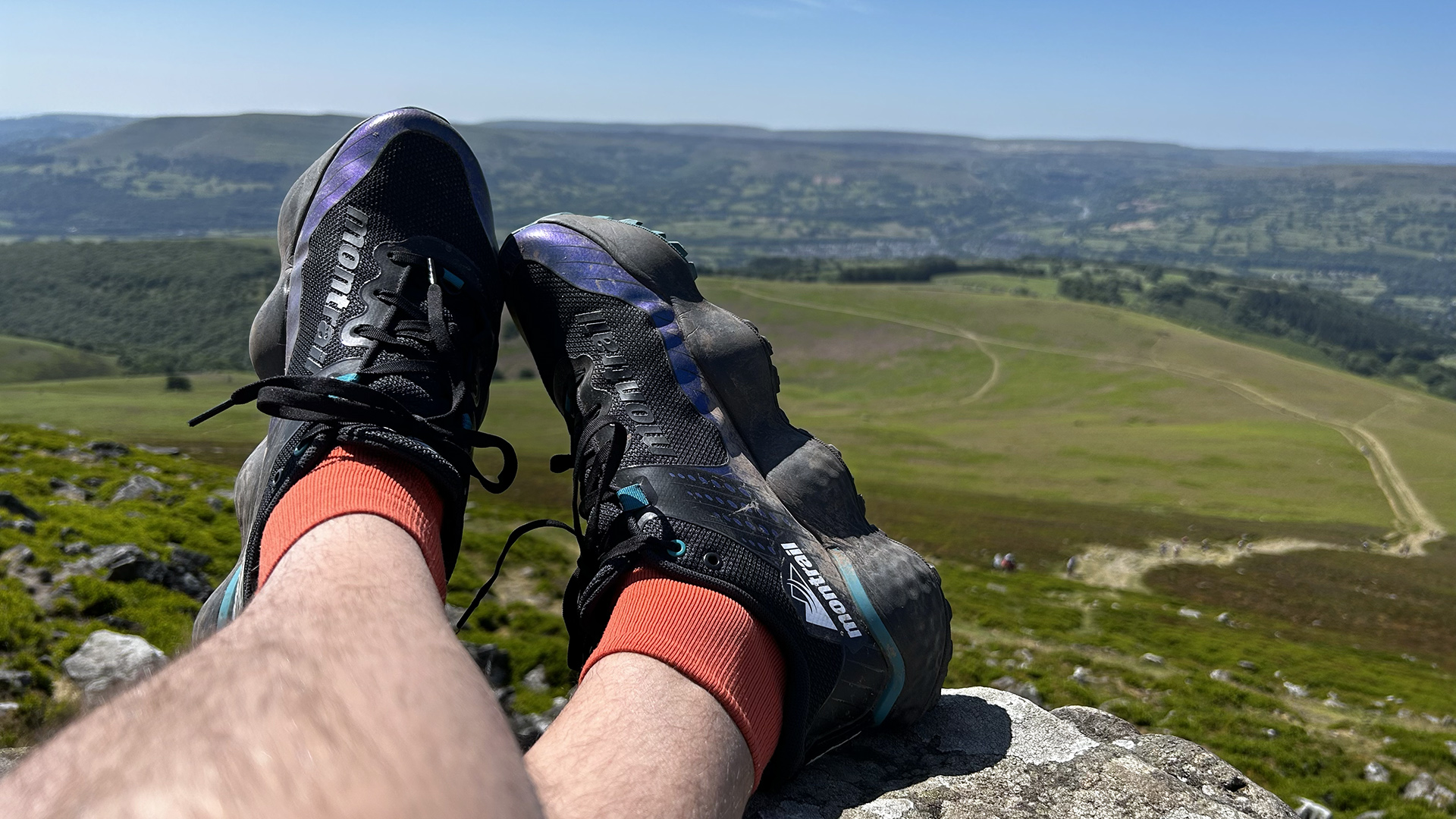

Specifications
Reasons to buy
Reasons to avoid
Well-cushioned and pretty, the Columbia Montrail Trinity MX Trail Running Shoes are sure to turn some heads on the trail. In fact, when we wore them recently on a trip, people commented on how cool the shoes looked, so if you like it when other runners (and hikers) comment on your footwear, the Montrail Trinity MX is a solid choice.
It's also an excellent max-cushioned trail option when leg preservation is your primary goal. The Techlite PLUSH midsole and rocker geometry help you move forward efficiently, and the 5 mm lugs provide enough traction on dry and wet surfaces to keep your footing stable. You could probably find trail running shoes with a similar running dynamic for cheaper, but they won't look as cool as Columbia Montrail Trinity MX.
Read our full Columbia Montrail Trinity MX Trail Running Shoe review.
Best hybrid
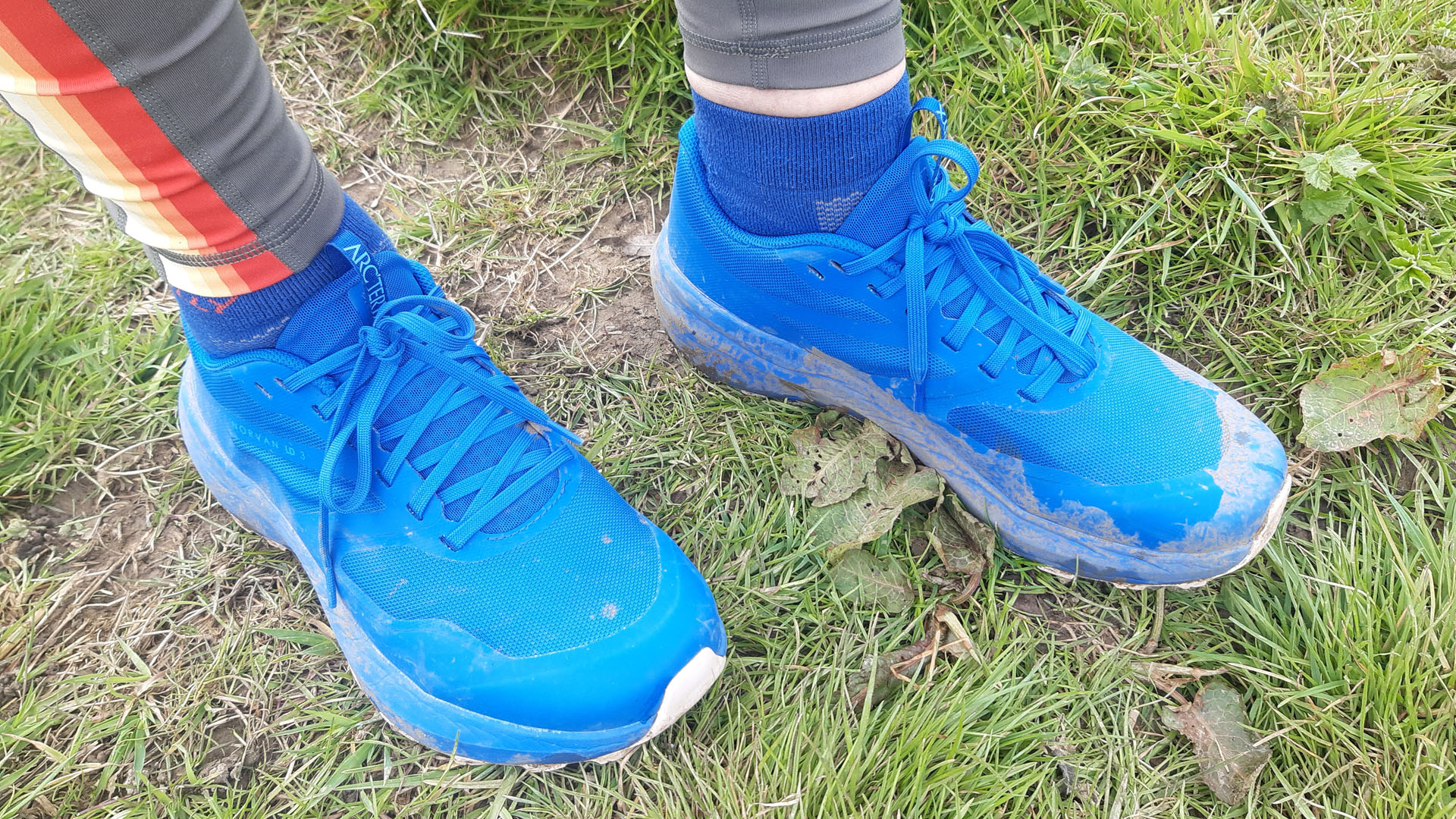

Specifications
Reasons to buy
Reasons to avoid
Initially, we were impressed with the comfort of the Arc'teryx Norvan LD 3, but the longer we wore them, the more we realised they were best suited to beginners. They have a reasonably high price tag and will appeal to those looking for a trail shoe with additional cushioning and support. If you are a fan of Asics Cumulus or Brooks Ghost road shoes, these are good crossover trail shoes.
They are also suitable for runners whose feet meet the ground heel first and require a 6mm drop. But longer distance, experienced trail runners may prefer something less restrictive, which allows them to feel the earth more intuitively.
Read our full Arc'teryx Norvan LD 3 review
Best all-rounder
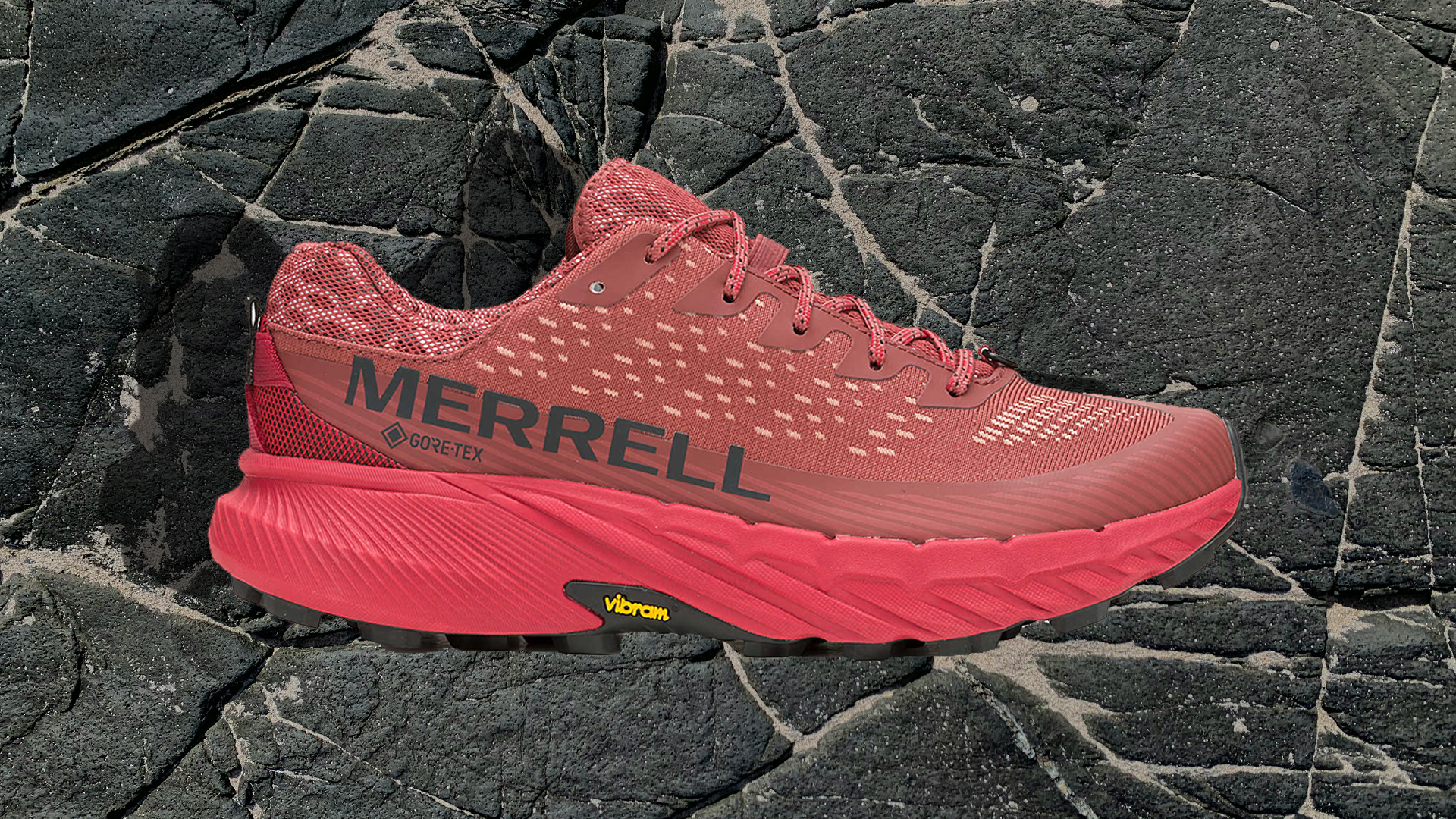
10. Merrell Agility Peak 5
Specifications
Reasons to buy
Reasons to avoid
Merrell might be better known for its hiking boots and shoes but more recently, it has unleashed an impressive line-up of fast and flexible trail shoes.
The latest Agility Peak 5 is arguably the best all-rounder yet, feeling lighter and more comfortable on the foot, while a revised mesh upper gives it a more airy and breathable feel when running in hot conditions.
Merrell does a great job of producing really hardy shoes and this another great example of that, plus the brand has seen fit to add the excellent Floatpro midsole foam that is seen in the lighter and generally more rapid Skyfire 2 we like.
The only thing we found was that Merrell's all-rounder shoes tend to run a little wider, and we found it roomy but not exceptionally so. Those that like their shoes snug might want to try first.
With that in mind, the heel also felt like it could do with offering more support and padding, something that revealed itself when tackling steep inclines.
How to choose the best trail running shoes for you
Choosing the best trail running shoes involves considering several factors to ensure they meet your specific needs and preferences. First, assess the type of terrain you'll be running on, whether it's rocky, muddy, technical, or a combination of these. This will help you select shoes with appropriate features like grip, stability, and protection to tackle the trails confidently.
Next, find the proper fit by trying on shoes and considering factors like toe box width, heel cup snugness, and overall comfort. It's essential to leave some room for foot swelling during longer runs to avoid discomfort.
Additionally, decide on the level of cushioning and support you prefer, whether you prioritise comfort or a firmer, more responsive feel based on your running style and foot mechanics.
Look for shoes with aggressive tread patterns and durable outsoles to provide a reliable grip on various trail surfaces, especially in wet or slippery conditions. Consider features like rock plates or reinforced toe caps for added protection against sharp rocks, roots, and other trail hazards.
Breathability and drainage are also key features to take into account. Opt for shoes with breathable uppers and drainage ports to keep your feet cool and dry, particularly during hot weather or water crossings.
Finally, consider the overall construction and materials used to ensure the shoes are durable enough to withstand the rigours of trail running and provide long-lasting performance.
FAQ
What are the best shoes for trail running
Technically, you can use road running shoes for trail runs, but we strongly recommend getting appropriate footwear for muddy trails. Trail shoes are especially well suited for providing grip on slippery surfaces, one of the biggest obstacles you need to overcome when running on uneven terrain.
Among more established contenders, our pick for the best trail running shoe currently is the Catamount, the latest trail shoe from Brooks to utilise the light and bouncy nitrogen-infused DNA Flash midsole technology we so loved in the Brooks Hyperion Tempo. It is also comfortable and very grippy too.
If you are looking for even more energy return, try the Inov-8 Trailfly Ultra G 300 Max for size. These aggressive-looking shoes use a Graphene-infused rubber outsole that provides more energy return than standard EVA midsoles. The upper is pretty comfortable and breathable, too, ideal for warm-weather runs.
If you're after pure speed, look no further than the Adidas Terrex Speed Ultra. These sleek-looking trail running shoes use Adidas' Boost midsole technology, and although the Terrex Speed Ultra might not provide an awful lot of grip on very soft surfaces, you will be able to unleash your full potential on semi-hard to hard trail paths wearing these shoes.
Can you run on road with trail shoes?
Sure you can! Most trail running shoes will work just fine on the road, and it's recommended to use trail shoes if you prefer to run on mixed surfaces. Trail running shoes will provide a better grip off road than road running shoes and won't break your feet when running on tarmac either.
That said, road shoes will provide way better energy return than trail shoes when used on road. That's because trail shoes often have integrated rock shields underfoot, which makes them bend less and return less energy. Due to the extra layers of protection, trail running shoes are generally heavier than road running shoes, although not always: well cushioned and stable road running shoes can be pretty hefty too.
What is the most cushioned trail running shoe?
The most cushioned trail running shoe right now is probably the New Balance Fresh Foam Hierro v6. Not only New Balance's Fresh Foam is one of the softest midsole foams on the market today, but the Hierro v6 even goes a step further by combining it with a padded collar and tongue, creating the ultimate, mega-cushioned trail running shoes for people who prefer to run in comfort, even when they are uncomfortable because it's piddling down outside and their head and running gear are soaking wet.
What is the difference between trail shoes and trail running shoes?
Trail shoes are a general term that encompasses a wide range of footwear designed for outdoor activities like hiking, walking, or light trail running. They often feature durable outsoles and protective uppers suitable for off-road terrain.
Trail running shoes are specifically designed for running on trails and rough terrain. They typically have features like aggressive tread patterns, lightweight construction, and cushioning designed for the unique demands of trail running, offering better performance and comfort compared to regular trail shoes.
Sign up to the T3 newsletter for smarter living straight to your inbox
Get all the latest news, reviews, deals and buying guides on gorgeous tech, home and active products from the T3 experts

Matt Kollat is a journalist and content creator who works for T3.com and its magazine counterpart as an Active Editor. His areas of expertise include wearables, drones, fitness equipment, nutrition and outdoor gear. He joined T3 in 2019. His byline appears in several publications, including Techradar and Fit&Well, and more. Matt also collaborated with other content creators (e.g. Garage Gym Reviews) and judged many awards, such as the European Specialist Sports Nutrition Alliance's ESSNawards. When he isn't working out, running or cycling, you'll find him roaming the countryside and trying out new podcasting and content creation equipment.
-
 3 overrated shoulder exercises, according to a fitness expert (and what to do instead)
3 overrated shoulder exercises, according to a fitness expert (and what to do instead)Sculpt 3D shoulders whilst minimising injury with these three alternative exercises
By Bryony Firth-Bernard Published
-
 Polar’s new subscription feature lands in the shadow of Garmin’s Connect+ rollout
Polar’s new subscription feature lands in the shadow of Garmin’s Connect+ rolloutPR genius or timing disaster? Polar’s new Fitness Programme adds adaptive training to its ecosystem
By Matt Kollat Published
-
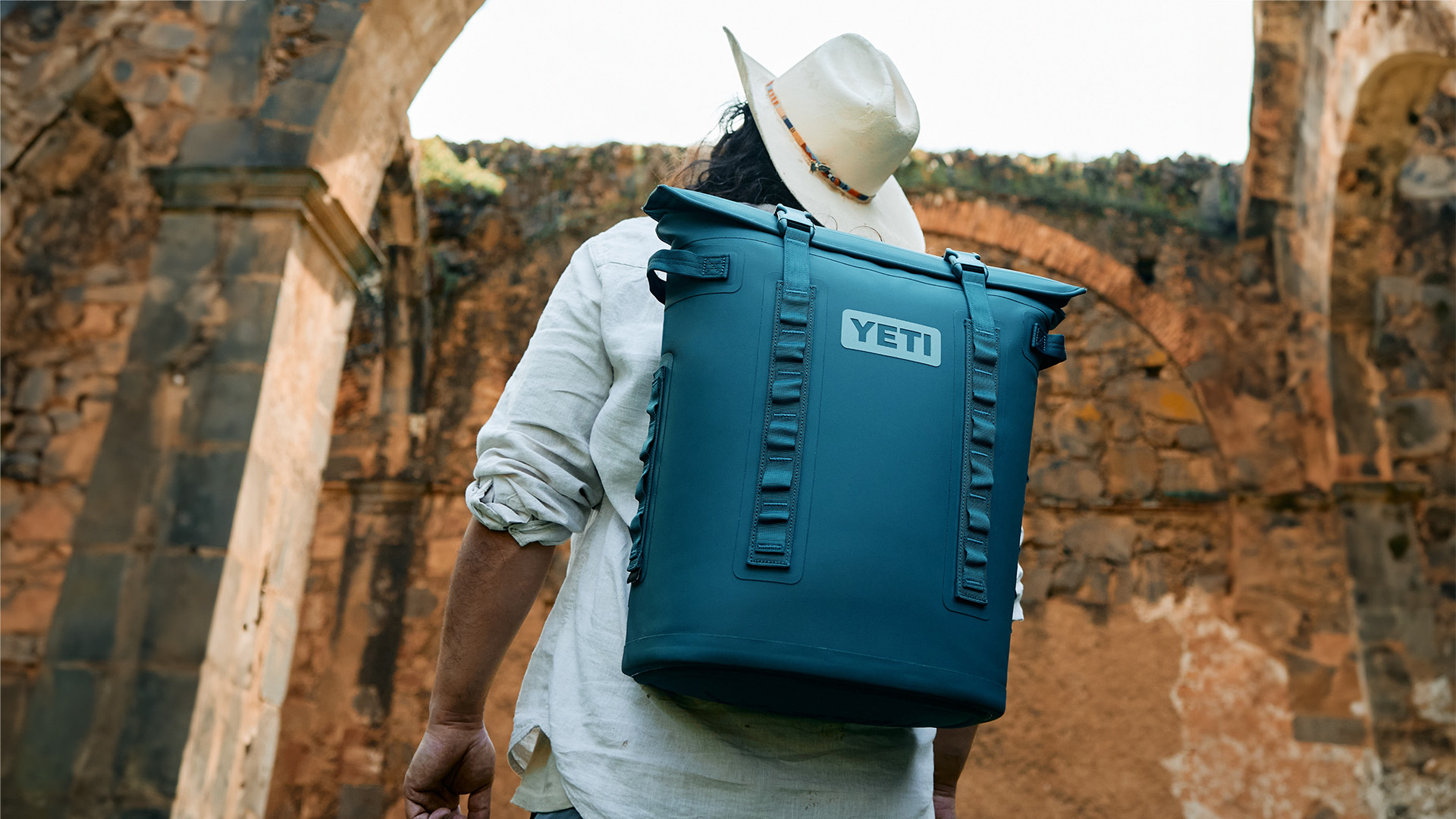 Best YETI coolers 2025: ice cold excellence
Best YETI coolers 2025: ice cold excellenceKeep food and beverage frosty with our curated selection of top-rated YETI coolers for every occasion
By Matt Kollat Last updated
-
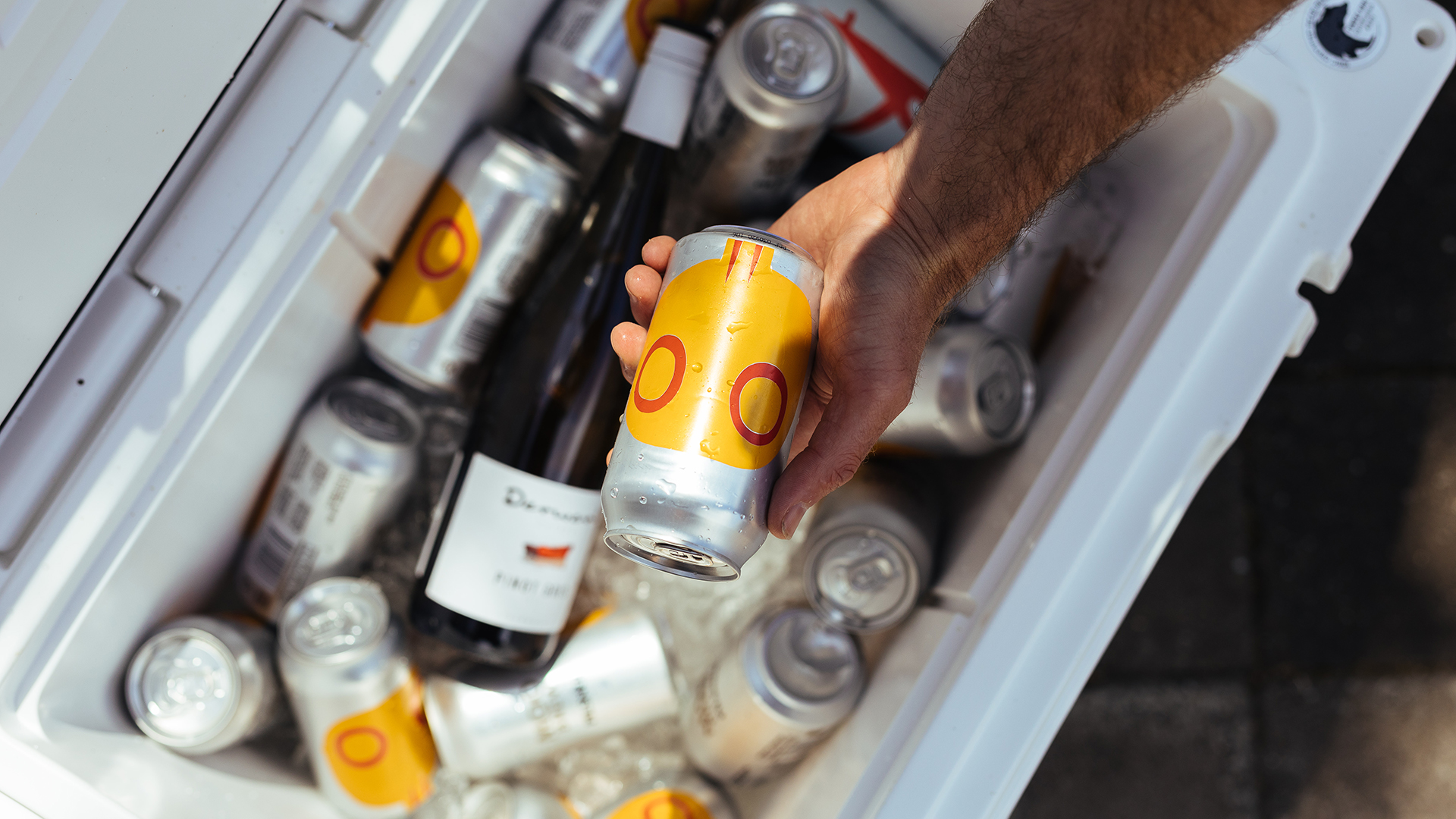 Best cool box for camping 2025: keep your food and drinks cool and fresh
Best cool box for camping 2025: keep your food and drinks cool and freshBrowse the best cool boxes, cool bags and electric coolers for camping, festivals, picnics and balmy days at the beach
By Matt Kollat Last updated
-
 Best smart ring 2025: compact, lightweight health-tracking wearables
Best smart ring 2025: compact, lightweight health-tracking wearablesExperience wearable innovation at your fingertips with the best smart rings available now
By Matt Kollat Last updated
-
 5 fans you can use outside: take the heat off with practical outdoor-friendly blowers
5 fans you can use outside: take the heat off with practical outdoor-friendly blowersFeature The best fans for outdoor use at home and away to tackle the summer heat
By Derek Adams Last updated
-
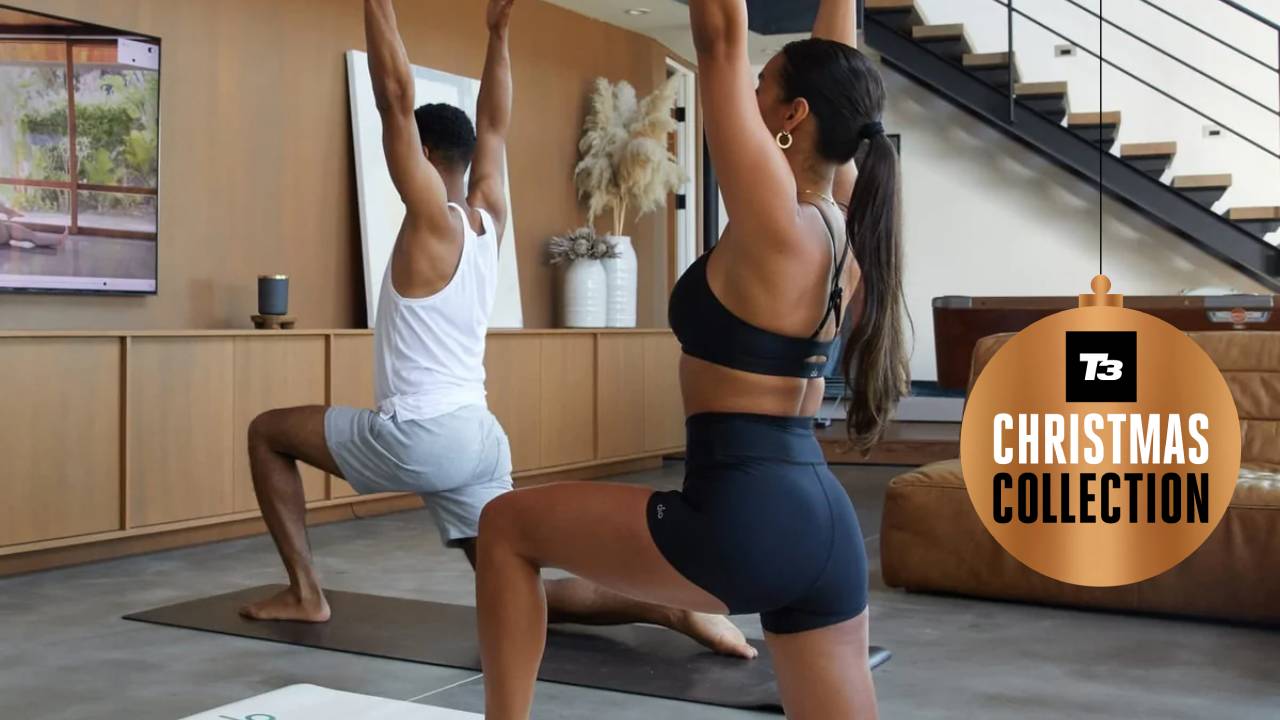 Best Christmas gifts for yoga fans: ideas for beginners to experts
Best Christmas gifts for yoga fans: ideas for beginners to expertsFeature Know someone who loves yoga? Here are the best Christmas gift ideas for yogis
By Bethan Girdler-Maslen Published
-
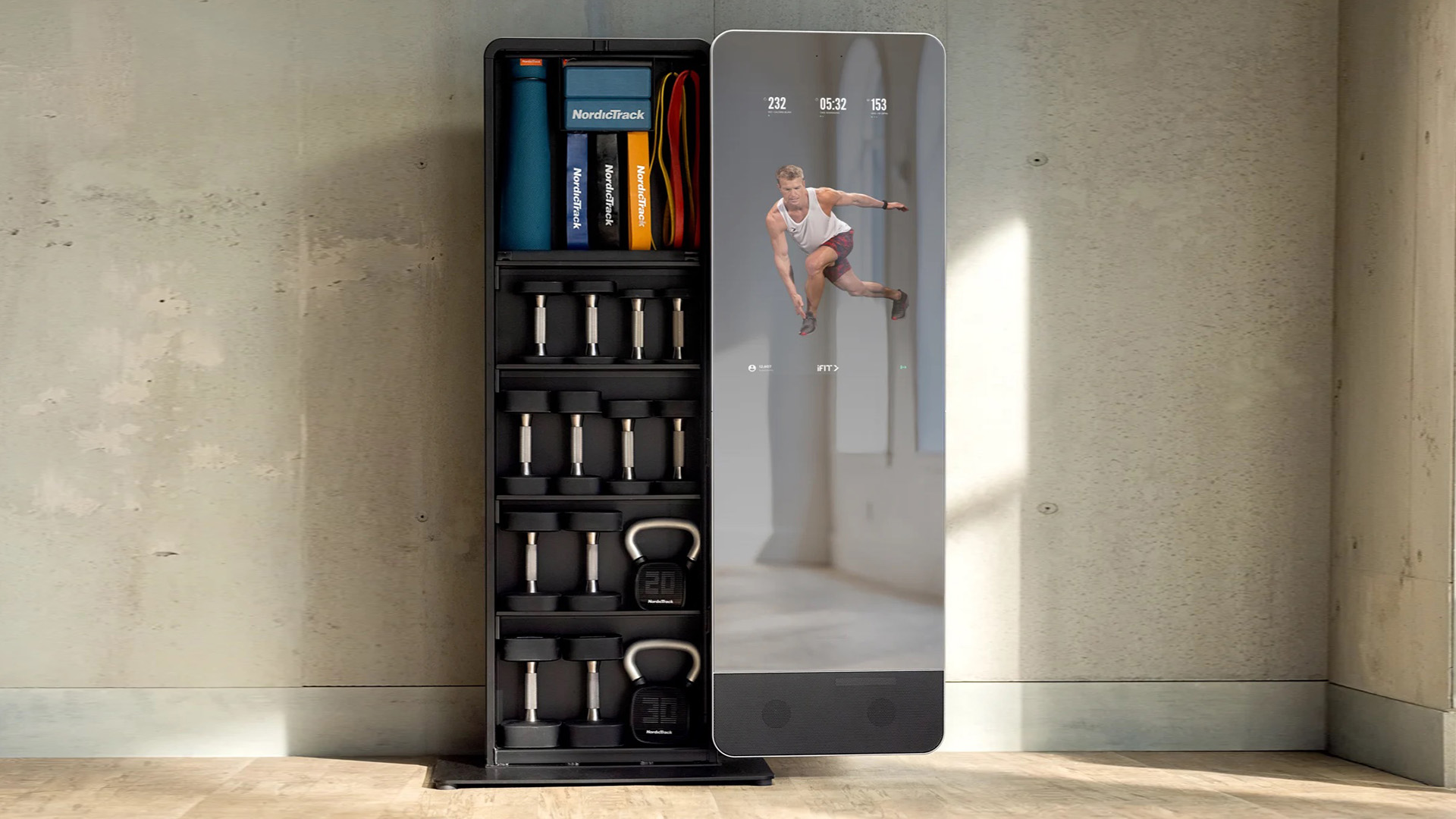 Best fitness mirrors 2025 to take your workouts to the next level
Best fitness mirrors 2025 to take your workouts to the next levelThe best fitness mirrors are here to slim you down and pump you up – without invading your space.
By TJ Fink Published
-
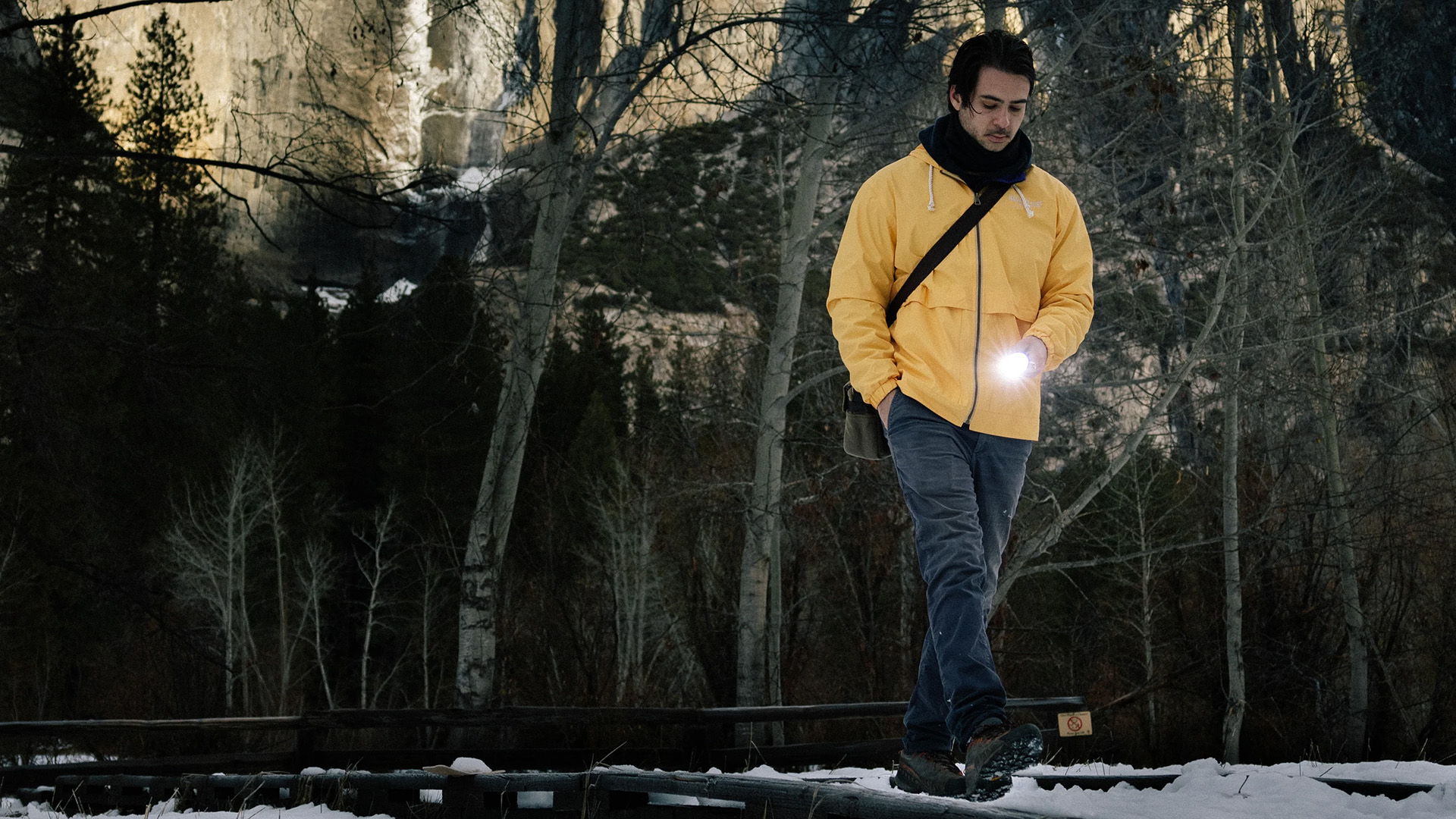 Best torch 2025: illuminate your way through the dark
Best torch 2025: illuminate your way through the darkGet the best torch for camping, night hiking, walking the dog or finding your way in a power cut
By Matt Kollat Last updated
-
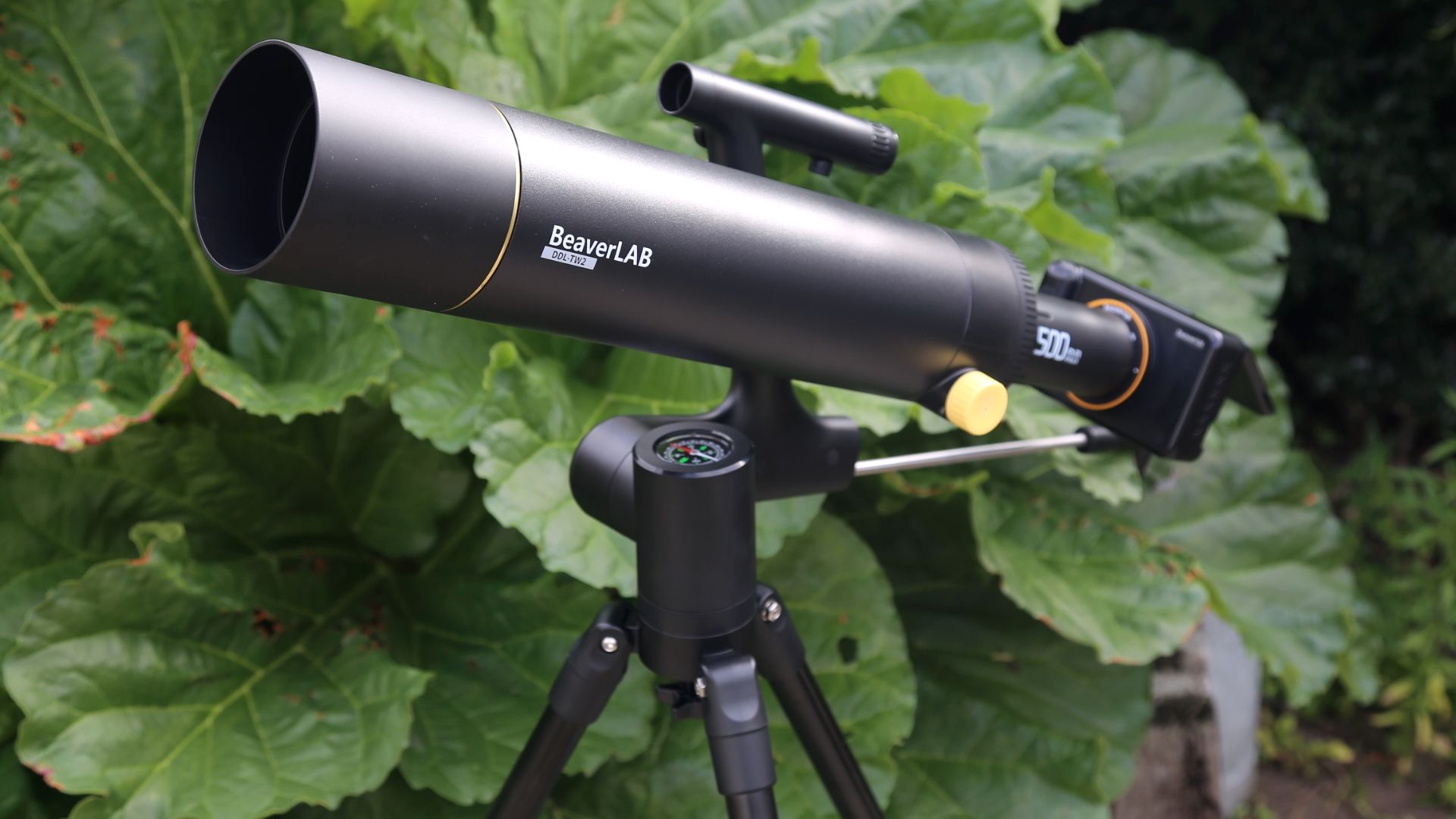 Best telescope for stargazing 2025: Bring the stars closer to home
Best telescope for stargazing 2025: Bring the stars closer to homeExplore the wonders of the universe with the best telescopes, perfect for stargazers of all levels
By Matt Kollat Last updated